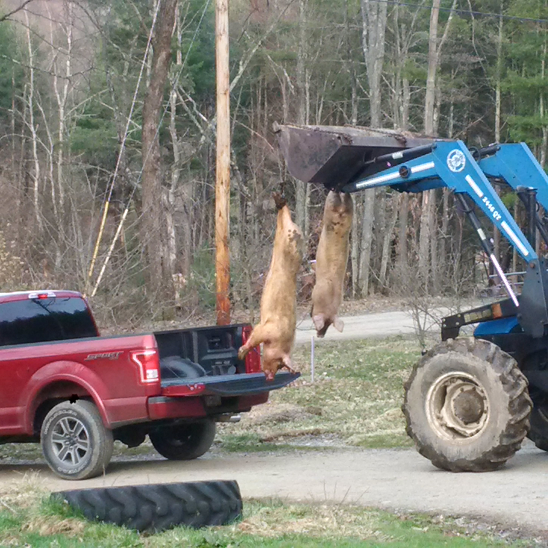Pig Slaughter & Butchering, 2021
Yesterday my neighbor and partner in crime, slaughtered four pigs. Once washed down we took them to a local butcher for processing.
The butcher we use will not slaughter the pigs, the farmer has too. When asked why his reason was, "most people do not know how heavy their pigs are. I am 60-years old, and I can handle up to a 300-pound pig and put them down. Anything over that I struggle with. So, I just say all pigs have to be brought to me slaughtered."
Over the years we have perfected the slaughtering process by luring the pigs to be slaughtered into a trailer the night before the slaughter.
The morning of the slaughter we let one pig out at a time. As one runs out, we put down a coffee can of pig feed on the ground in front of the shooter and the pig runs over. As it drops their head to eat the pig food one of us pops it in the head. I like using a suppressed AR-15 loaded with subsonic rounds. Once down and kicking I tap them again a few times in the jugular to help with the bleeding out process. Move to a different spot a few yards away and start the process all over again.
Things have gone easier for the pigs and us once I switched to a suppressor and subsonic ammo a few years ago. Loud rifle reports seemed to get the pigs riled up and made the additional slaughtering an uphill trek as each pig was dispatched. Pigs are smart and you do not want to get their adrenaline up.
Once all pigs are dispatched, one person slices the neck while the other gets the tractor.

Take two at a time from the field back to the barn to wash down and then load into the truck. Then off to the butcher.

The pigs we used this year were Gloucestershire's. They were a bit more expensive to buy as a piglet at $90- each vs. the white wattles we usually buy at $70- each.
My neighbor and I feed the pigs 80% produce we get from a local Wegman's supermarket. Produce that they would normally throw out. The other 20% is pig feed purchased by a local farmer who raises feed for all kinds of critters.
We have been raising, slaughtering, and butchering pigs for about 10-years now. Our pigs are grown in a nice 4,000 sf field so they tend to be a bit chewier than grocery store pigs that are raised in small pens. Because of the food we feed the pigs and the great conditions they are raised in; we think the finished product is a cut above what you buy in the grocery store. Another plus, what is fed to them has no additional by-products like antibiotics.
Since my neighbor does most of the work and we raise them on his land, he sells any extra over two pigs - One for him and one for me. The others, he will sell by half and whole pig sizes.
